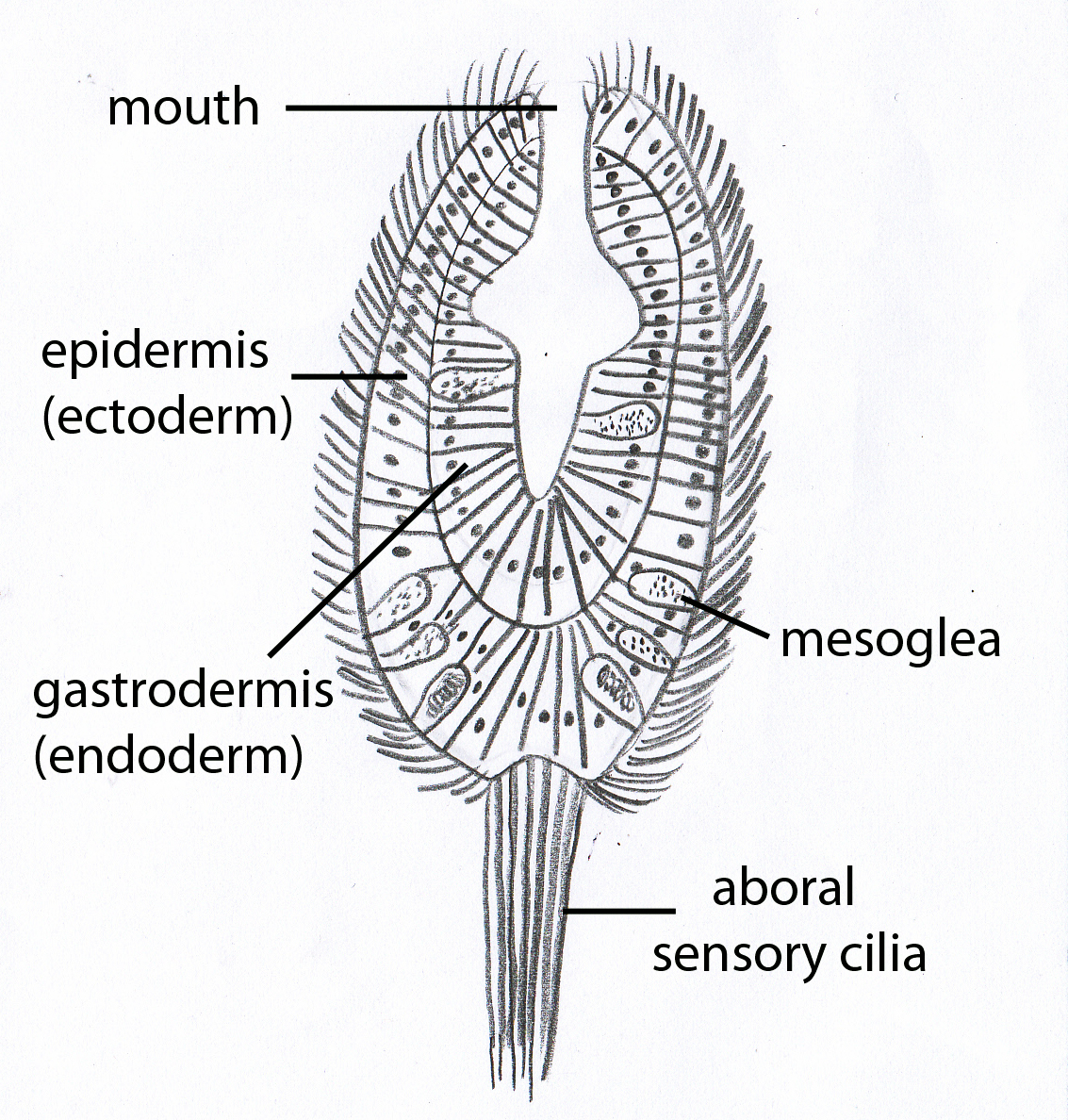Reproduction and Development
 |
|
Figure 1. Longitudinal fission of a sea anemone polyp. Adapted from Ruppert, Fox & Barnes (2004). |
Reproduction is commonly asexual, through a process known as longitudinal fission1 where a singular polyp divides into two polyps which then separate2 (Figure 1). Sea anemones are also able to reproduce sexually, with eggs and sperm developing in separate gonads, which are mere aggregations of germ cells in the septa behind the septal filaments (see Anatomy & Physiology). In most species, mature gametes that arise from the endoderm are shed into the coelenteron and spawned through the mouth. Fertilization is external in the seawater, other than viviparous species where eggs are fertilized in the coelenteron1.
It has been suggested that sea anemones favor asexual over sexual reproduction when conditions are harsher given the supposedly lower energetic cost3.
Hermaphroditism is also frequently observed and is usually associated with small body size and brooding of young. It is usually mutually exclusive with asexual reproduction. Hermaphroditic individuals tend to be larger than females in the same population. All these suggest that hermaphroditism may compensate for low abilities to move about to locate a mate, with males and females having different optimal sizes that lead to its occurrence. However, fertilization remains external and gametes are still released into the water column3.
 |
|
Figure 2. Planula larvae of sea anemones. Adapted from Ruppert, Fox & Barnes (2004). |
The larvae of most sea anemones species is planula and each individual usually has an apical organ that may occasionally bear a well-developed tuft of cilia at the aboral (leading) end1,3 (Figure 2). It has been suggested that the apical organ might serve sensory purposes and help larvae select substrate4,5. However, the environmental factors to which it is sensitive are not known3.
Larvae are typically planktonic lecithotrophs although some may be planktotrophic and will trail sticky mucous threads from their mouths to filter feed. Metamorphosis usually begins with an early morphogenesis of tentacles, septa, and pharynx before the larva settles on the aboral end1.
Figure 3 illustrates an example of the life cycle of a sea anemone. One unique feature of sea anemones is that they do not have a medusa stage and exist only in polyps, unlike other cnidarian classes3.

Figure 3. Life cycle of a sea anemone. Adapted from Frazão, Vasconcelos & Antunes (2012) and Ruppert, Fox & Barnes (2004).
1Ruppert, Fox & Barnes 2004
2Frazão, Vasconcelos & Antunes 2012
3Shick 1991
4Chia & Spaulding 1972
5Chia & Koss 1979
|